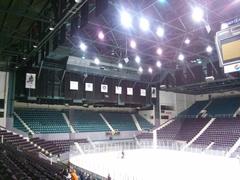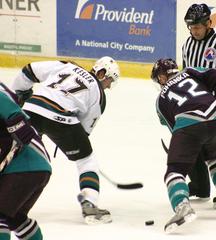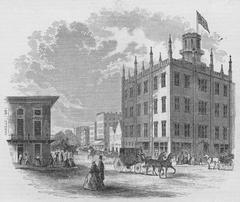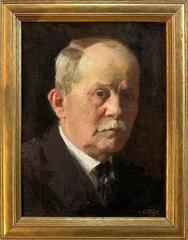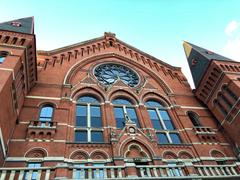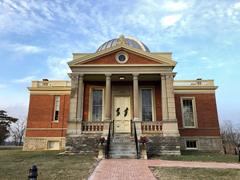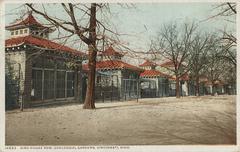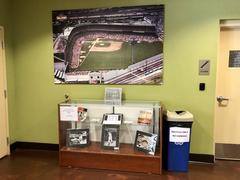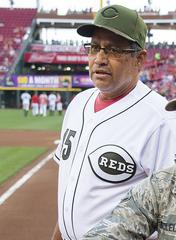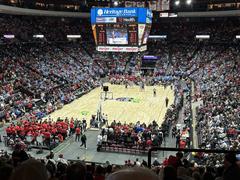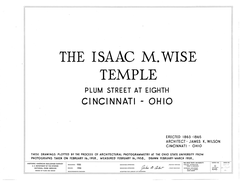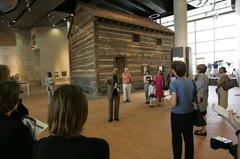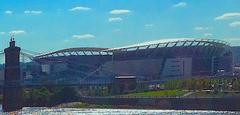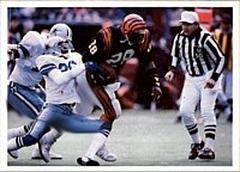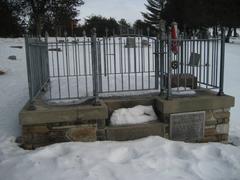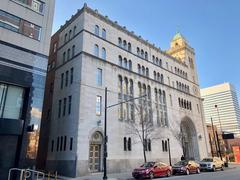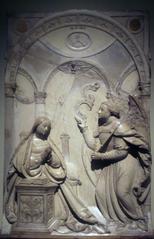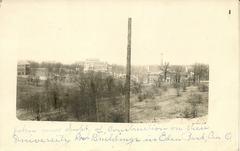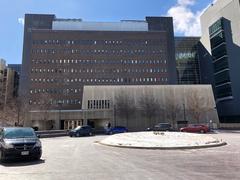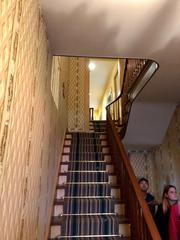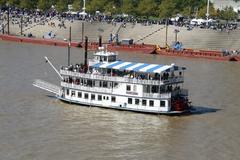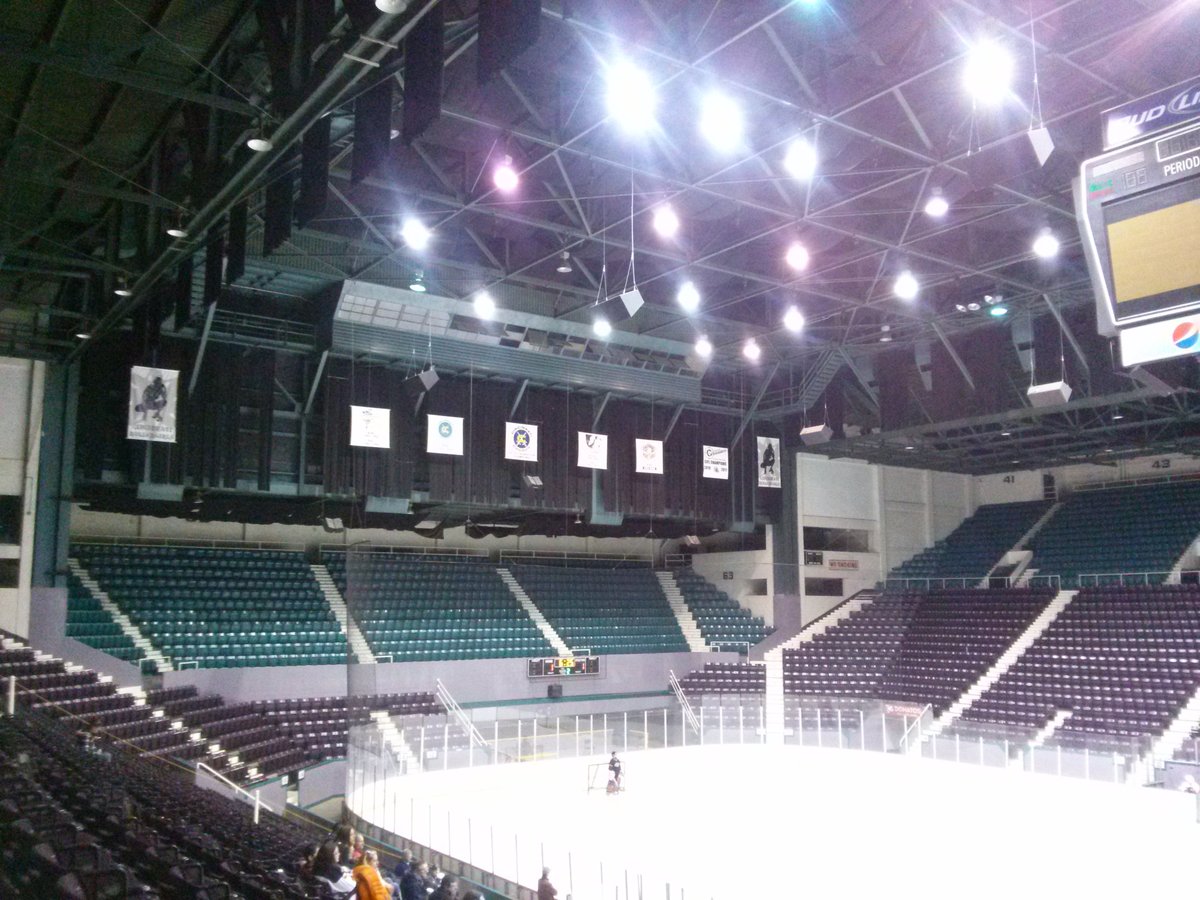
Cincinnati Gardens Visiting Hours, Tickets, and Historical Sites Guide
Date: 14/06/2025
Introduction
Cincinnati Gardens was a central part of Cincinnati’s cultural and sporting history for nearly 70 years. Established in 1949, the arena hosted professional basketball and hockey teams, legendary concerts, and countless community events. Though the structure was demolished between 2018 and 2025 (depending on the source), the Gardens’ legacy endures through artifacts, museum exhibits, and the collective memory of the city. This guide explores the rich history of Cincinnati Gardens, details how visitors can connect with its enduring story, and highlights alternative attractions to experience Cincinnati’s vibrant heritage (Cincinnati Museum Center, Wikipedia, Visit Cincy).
Table of Contents
- Introduction
- Origins and Construction
- Sporting and Cultural Significance
- Notable Events and Milestones
- Architectural and Cultural Legacy
- Decline, Closure, and Demolition
- Experiencing the Cincinnati Gardens Legacy Today
- Alternative Cincinnati Experiences
- Frequently Asked Questions (FAQ)
- Conclusion & Call to Action
- References and Further Reading
Origins and Construction
Cincinnati Gardens was conceived during Cincinnati’s post-World War II expansion. Constructed in 1949 at 2250 Seymour Avenue in the Bond Hill neighborhood, the arena cost approximately $3 million (over $35 million today) and boasted a seating capacity exceeding 11,000 for sports and up to 12,000 for concerts. The Gardens’ design, inspired by Toronto’s Maple Leaf Gardens, featured a large, unobstructed floor perfect for sports, concerts, and community events. Its streamlined, functional architecture mirrored the optimism of the era and positioned Cincinnati as a major Midwestern cultural center (Wikipedia).
Sporting and Cultural Significance
Basketball: The Cincinnati Royals Era
From 1957 to 1972, the Gardens was home to the NBA’s Cincinnati Royals, starring Hall of Famer Oscar Robertson. The arena also hosted the 1966 NBA All-Star Game, further cementing its place in basketball history. The Gardens regularly hosted high-profile college basketball showdowns, including the intense “Crosstown Shootout” between the University of Cincinnati and Xavier University (Wikipedia; Cincy Shirts).
Hockey: A Tradition of Champions
Hockey played a major role in the Gardens’ identity from its opening—beginning with an NHL exhibition between the Montreal Canadiens and Dallas Texans in 1949. The Cincinnati Mohawks, Swords, Stingers, Cyclones, and Mighty Ducks all called the Gardens home at various points, with the Mohawks claiming five Turner Cups in the 1950s. The arena’s reputation as a hockey hotspot helped shape Cincinnati’s sporting landscape (Wikipedia; Cincy Shirts).
Other Sports and Events
Beyond basketball and hockey, the Gardens hosted boxing (including Ezzard Charles’ legendary bouts), roller derby, indoor soccer, football, wrestling, circuses, and more. Its versatility made it a beloved community gathering place for generations (Wikipedia).
Notable Events and Milestones
- The Beatles (1964): Their first North American tour included a stop at the Gardens, drawing massive crowds.
- Elvis Presley: Performed in 1971 and 1973, solidifying the venue’s musical legacy.
- NBA All-Star Game (1966): Brought national attention to the arena.
- Visits by Martin Luther King Jr. and Richard Nixon: The Gardens served as a platform for historical figures beyond sports and music (Cincinnati.com).
- Family Traditions: The Shriner Circus and other annual events became cherished community rituals.
Architectural and Cultural Legacy
Cincinnati Gardens’ design featured a brick and limestone exterior and a grand entrance adorned with six limestone bas-relief sculptures by Henry Mott, depicting athletes from the arena’s key sports. These sculptures were preserved and now reside at Xavier University and the Cincinnati Golden Gloves Academy. The iconic “Cincinnati Gardens” porcelain letters are displayed at the American Sign Museum (Wikipedia; Cincy Shirts; American Sign Museum). While the arena itself was utilitarian, it became a beloved symbol of local pride, community, and shared experience.
Decline, Closure, and Demolition
As newer venues like the Riverfront Coliseum (now Heritage Bank Center) opened, the Gardens gradually lost its prominence. After years of hosting smaller events and community gatherings, the arena closed in 2016 and was demolished by 2018 (some sources cite ongoing demolition through 2025). The loss was deeply felt, but the city has worked to preserve its memory through artifacts, art, and storytelling (The Purple Quill).
Experiencing the Cincinnati Gardens Legacy Today
Museums and Archives
- Cincinnati Museum Center: Offers rotating exhibits and houses memorabilia related to the Gardens (Cincinnati Museum Center).
- American Sign Museum: Displays the original Gardens signage (American Sign Museum).
- Xavier University’s Cintas Center & Cincinnati Golden Gloves Academy: Feature preserved limestone sculptures and memorabilia.
Public Art and Memorials
- While there is no official monument at the former site, preserved sculptures and letters serve as public memorials at various locations.
Guided Tours and Neighborhood Exploration
- Guided Tours: Some local tour companies weave stories of Cincinnati Gardens into their sports and music history tours (Visit Cincy).
- Bond Hill Neighborhood: Explore the community that once surrounded the arena, including local eateries and historical sites.
Digital and Community Resources
- Archives and Blogs: Memories of the Gardens provides photos and personal stories.
- Libraries and Historical Societies: Offer collections of programs, oral histories, and photographs.
Alternative Cincinnati Experiences
Even though the Gardens is gone, Cincinnati offers a wealth of venues and experiences reflecting its lively culture and sporting tradition:
Sports and Recreation
- Heritage Bank Center: Home to the Cincinnati Cyclones and major concerts.
- Northland Ice Center/Sports Plus: Public skating and hockey.
- Great American Ball Park: Tours and games with the Cincinnati Reds.
Live Music and Festivals
- Riverbend Music Center: Summer concerts and festivals.
- Taft Theatre/Aronoff Center: Broadway, concerts, and comedy.
- Local Festivals: Enjoy seasonal events like Summerfair at Coney Island and Panegyri Greek Festival (365 Cincinnati).
Historic and Cultural Sites
- Spring Grove Cemetery & Arboretum: Scenic walks and historic tours (The Broke Backpacker).
- National Underground Railroad Freedom Center: Powerful historical exhibits.
- Mt. Adams and Over-the-Rhine: Historic neighborhoods with unique architecture and nightlife.
Gardens and Green Spaces
- Krohn Conservatory: Art Deco greenhouse with lush displays and the annual Butterfly Show (Krohn Conservatory).
- Ault Park: Renowned for summer music festivals and panoramic views.
Frequently Asked Questions (FAQ)
Q: Can I visit Cincinnati Gardens today?
A: No, Cincinnati Gardens has been demolished. The site is closed, fenced off, and undergoing redevelopment.
Q: Are there any memorials or artifacts from Cincinnati Gardens?
A: Yes, major artifacts are displayed at the American Sign Museum, Xavier University, and the Cincinnati Golden Gloves Academy.
Q: Where can I find memorabilia or photos?
A: Visit the Cincinnati Museum Center, American Sign Museum, and digital archives like Memories of the Gardens.
Q: Are there guided tours about Cincinnati Gardens?
A: While no tours of the former site itself exist, some local tours cover the arena’s history as part of broader sports and music routes (Visit Cincy).
Q: What are some alternative venues for sports and concerts in Cincinnati?
A: Heritage Bank Center, Riverbend Music Center, Great American Ball Park, and local community centers offer similar experiences.
Conclusion & Call to Action
Cincinnati Gardens played a defining role in the city’s culture and community life for decades. Though the building is gone, its legacy thrives in museums, public art, and the memories of Cincinnatians. To experience the spirit of Cincinnati Gardens:
- Visit key museums and archives to see preserved artifacts.
- Join guided tours or neighborhood explorations that celebrate the city’s sports and music history.
- Attend local festivals, concerts, and sporting events that carry forward Cincinnati’s vibrant tradition.
- Download the Audiala app for guided audio tours and insider tips on Cincinnati’s historical and cultural sites.
For more information, follow Audiala on social media and explore our related articles on Cincinnati’s landmarks and events.
References and Further Reading
- Cincinnati Museum Center
- Cincinnati Gardens – Wikipedia
- A Brief History of the Cincinnati Gardens – Cincy Shirts
- American Sign Museum
- Krohn Conservatory
- Remembering the Cincinnati Gardens – The Purple Quill
- Memories of the Gardens Blog
- Best Things to Do in Cincinnati in June – 365 Cincinnati
We hope this guide helps you connect with the enduring spirit of Cincinnati Gardens and the vibrant city it helped shape.
